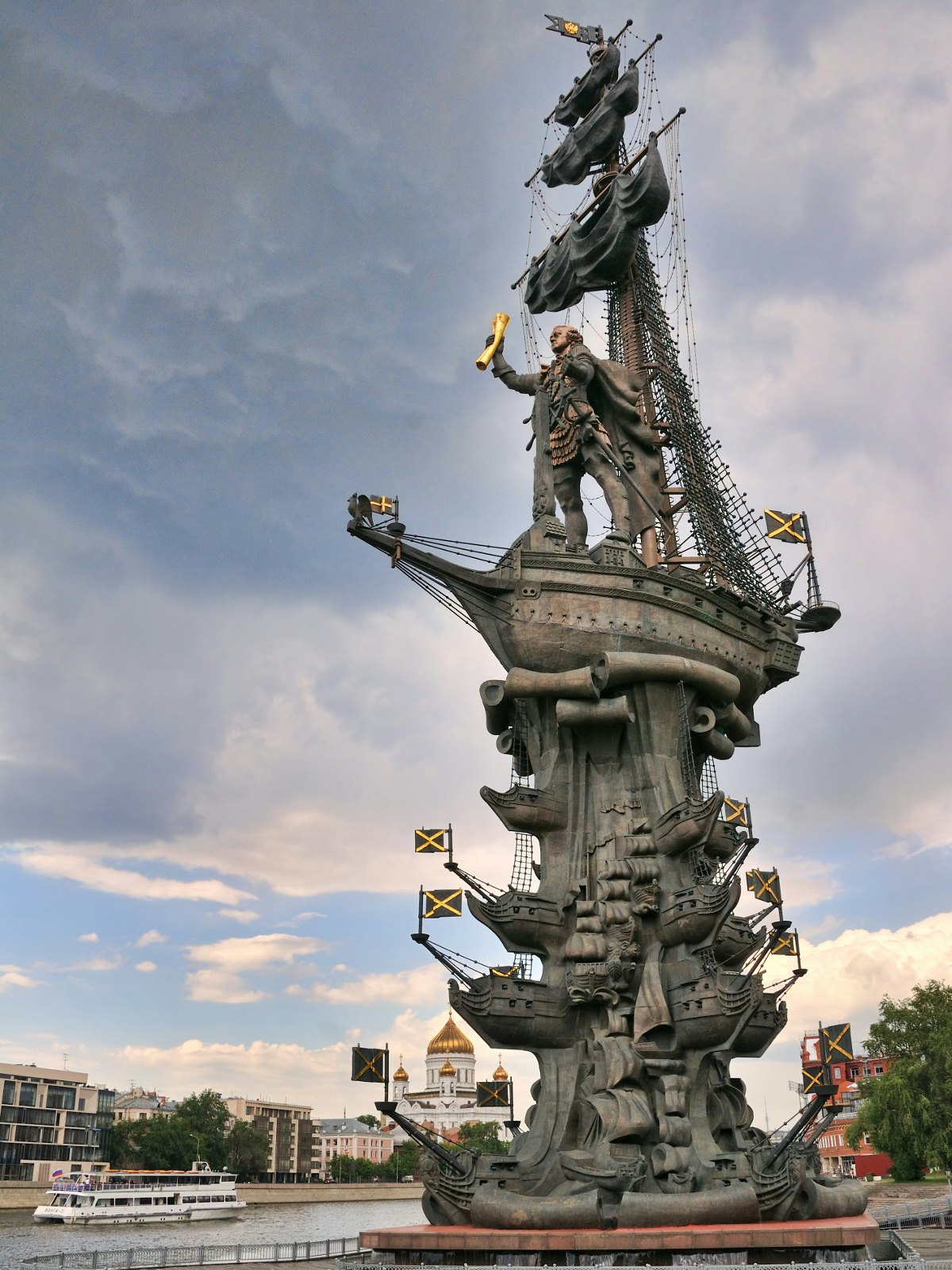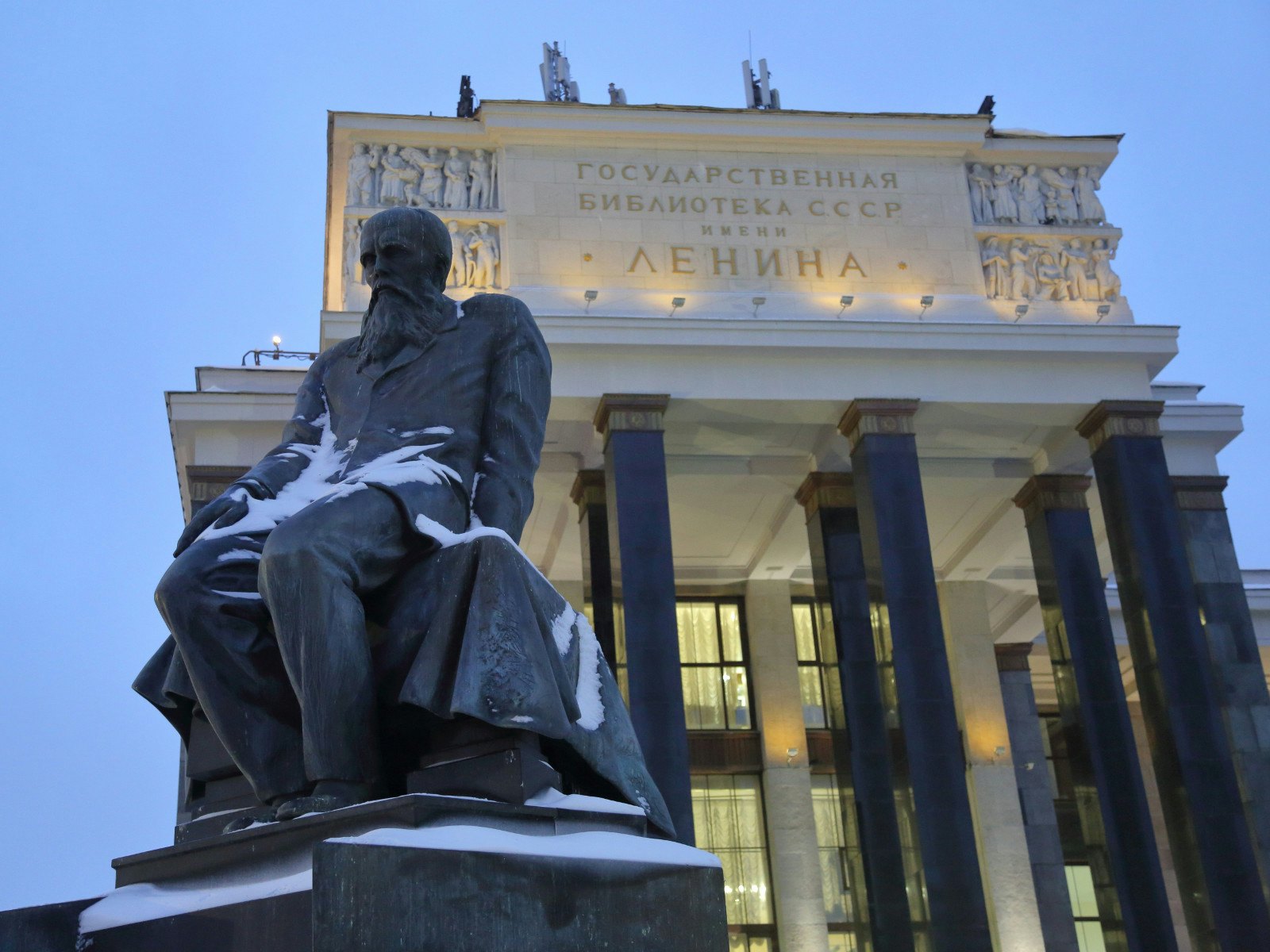
The ornate neo-baroque interior of Moscow's Yeliseev Grocery @ Popova Valeriya / Shutterstock
Among the Kremlin grandeur, tall Stalinist buildings and gorgeous onion-domed churches, it’s easy to overlook the Russian capital’s less famous sights. Some of them are unfamiliar even to locals, but they are treasure troves of Russian history, architecture and art. Here are a few of Moscow’s alternative highlights that are well worth a visit.

Yeliseev Grocery
This grand, historical grocery store on Tverskaya street opened in 1901, becoming the first such place in Moscow. It was famous both for the luxurious interior, decorated in Baroque Revival style, and for the vast selection of rare and high-quality goods. The building itself used to be a private mansion where famous Russian literary figures, Alexander Pushkin among them, gathered in the mid-19th century. During the Soviet times the Yeliseev Grocery was called Gastronome Number 1 and was one of the few food stores in the country with no shortage of supplies. Today you can still shop here for delicacies – or just swing by to admire the interior.
Bakhrushin Theatre Museum
Russian merchant Alexey Bakhrushin was a devoted collector of all things theatre – costumes, designs, posters, props and more. He first presented his treasures to the public in 1894 and a museum was created to exhibit the collection. It went through hard times during the Russian revolution, and was at constant risk of plunder. Bakhrushin lost his fortune, like many wealthy men in the newly created Soviet Union, but he kept working on expanding the museum’s exhibits, receiving donations from abroad and purchasing what he could afford. Now you can explore the incredible collection, which lists over 1.5 million objects, in a gorgeous old building near Paveletskaya metro station.

Bunker-42
The construction of this secret hideout in the centre of Moscow was completed in 1953. As the United States developed a nuclear bomb, Josef Stalin ordered Soviet scientists to invent methods of protection against the new weapon. Located at a depth of 65m underneath Taganka square, the bunker was supposed to serve as a safehouse for top Russian officials in the event of a nuclear attack. Fortunately, the attack never came, so until 1986 the bunker was used to manage the Russian nuclear arsenal. Now anyone can explore it on a guided underground tour and learn about the risks and challenges of the Cold War era.
Khlebozavod 9
The gentrification of former industrial areas around Moscow continues, with the team behind Flakon (abandoned glassware plant turned into a shopping centre) now developing its neighbour – Khlebozavod 9, a former bread factory. The building, dating from 1934, is a fine example of Soviet constructivism. Once the full-scale renovation is complete, the space will house offices, cafes, education centres, boutiques and galleries. At the moment it’s worth a visit to browse some interesting design stores that can already be found here, and on many weekends various crafts and food markets and festivals take place in the area.

Peter the Great Monument
The 98m-tall sculpture by Zurab Tsereteli is one of the largest monuments not only in Russia but the whole world, taller even than New York’s Statue of Liberty. Rising along the Moscow River embankment, just a short walk from Gorky Park, the monument has been a subject of local jokes ever since its installation in 1997 and was listed among the ugliest statues in the world. Officially commemorating 300 years of the Russian Navy, it was modelled to resemble the Navy’s founder Peter the Great; funnily enough, it ended up in Moscow which the Russian tsar openly disliked. The efforts of Muscovites to get it demolished were to no avail – so visitors can now proudly take a photo in front of one of the world’s ugliest structures.
Novodevichy Cemetery
A walk in the graveyard may not sound like much fun, but Novodevichy is not your average cemetery. Adjacent to the Unesco World Heritage–listed Novodevichy Convent, it has long served as the burial ground for some of the most famous Russians, from royalty to politicians and celebrities. Many of the tombstones look more like works of art. Here you can pay your respects to writers Gogol and Chekhov, poet Mayakovsky, composer Prokofiev and theatre director Stanislavski, or ponder Nikita Khruschev’s black-and-white monument by Ernest Neizvestny, which symbolises the dual nature of a person. Novodevichy is also the final resting place of former Russian president Boris Yeltsin, and Raisa Gorbacheva, the wife of ex-USSR president Mikhail Gorbachev.

Russian State Library
One of the reasons many Muscovites love Dmitry Glukhovsky’s post-apocalyptic science fiction novel Metro 2033 is the scene that unravels at the Russian State Library (formerly called the Lenin Library): the main protagonist, Artyom, clad in his radiation suit, sneaks into the abandoned building to look for important documents. It doesn’t all go according to plan: Artyom and his companions are attacked by brutal monsters who are, in fact, mutated librarians. The scene is a rather funny allegory of the stern library workers of the past. But fear not: these days you can not only count the statues on the library’s rooftop from the street, but also register for a tour around the premises or even sign up as a member regardless of your citizenship. Dating back to 1862, the ‘Leninka’ is one of the biggest national libraries in the world – and one of its most famous reading halls, number 3, is again open to visitors after an extended renovation.



